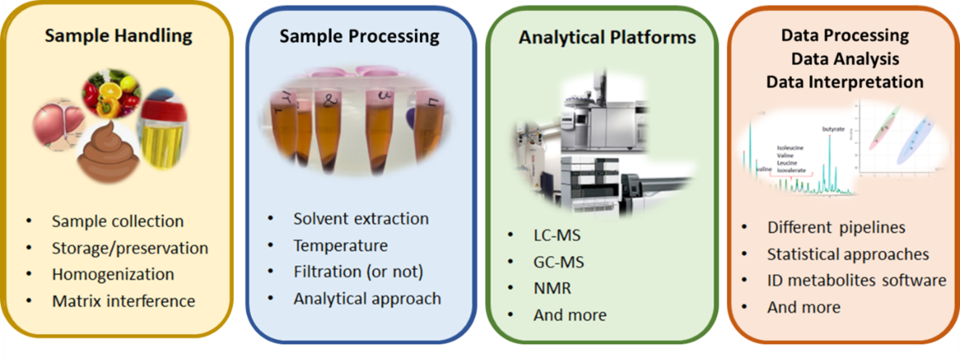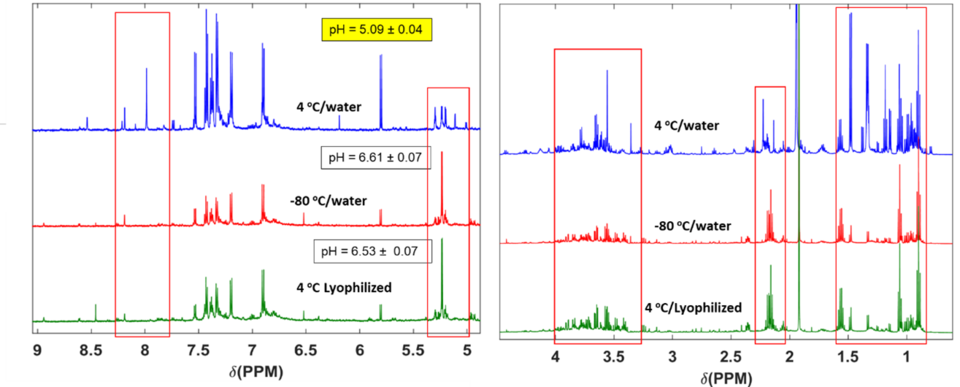Summary
There is a growing need to establish quality assurance and measurement strategies to address microbial function and emergent activities related to interspecies interactions in microbial communities. A critical quality metric is microbial health and function, which can be measured by metabolomics techniques. NIST is developing standards and reference material to support this field.

Description
Mass spectrometry (MS) and nuclear magnetic resonance (NMR) spectroscopy are widely used and complementary analytical platforms for the characterization, identification, and quantification of a metabolome.
MS techniques, typically coupled to chromatography, provide a chemical fingerprint of complex samples, and enable the collection of large numbers of mass spectra of unknown analytes at the nanomolar concentration range. MS allows for broad metabolome coverage due to high sensitivity and resolution. Chromatographic methods, such as high-performance liquid chromatography (HPLC) and gas chromatography (GC), allow for the separation of compounds in highly complex mixtures prior to detection by a variety of MS and other techniques.
NMR is a highly reproducible and quantitative spectroscopic technique that enables the analysis of biospecimens and biofluids without extensive sample preparation. While sensitivity in NMR is lower compared to MS techniques, it is excellent for hydrophilic and non-ionizable compounds, which can be challenging for MS methods. The technique is also important for the structure elucidation of unknown metabolites.
Our work is focused on utilizing both MS and NMR to develop metrics, reference materials, and approaches to improve quantification and characterization of metabolites present in microbial communities such as the gut microbiome. To address some of these needs, NIST is developing a Human Gut Microbiome Reference Material (RM 8048) to enable comparability and improve reproducibility in metagenomics and metabolomics analysis.

To complement the stool material, NIST is also developing a quantitative calibration solution containing a wide variety of metabolites (Research Grade Test Material (RGTM) 10212). This material will target omics-based techniques (LC-MS and 1H NMR) for small molecules to bring ground truth to the measurement and challenge some of the steps in the analytical workflow. This initial effort aims to target metabolites found in the human gut microbiota.
Selected Publications
- Mandal R, Cano R, Davis CD, Hayashi D, Jackson SA, Jones CM, Lampe JW, Latullippe ME, Lin NJ, Lippa KA, Piotrowski P, Da Silva SM, Swanson KS and Wishart DS. “Workshop report: Toward the Development of a human whole stool reference material for metabolomic and metagenomic gut microbiome measurements. Metabolomics, 2-16:119, 2020. https://link.springer.com/article/10.1007/s11306-020-01744-5
- Julia M. Gauglitz et al., Nat. Biotechnol. Jul 7th, 2022. Enhancing untargeted metabolomics using metadata-based source annotation. https://pubmed.ncbi.nlm.nih.gov/35798960/

